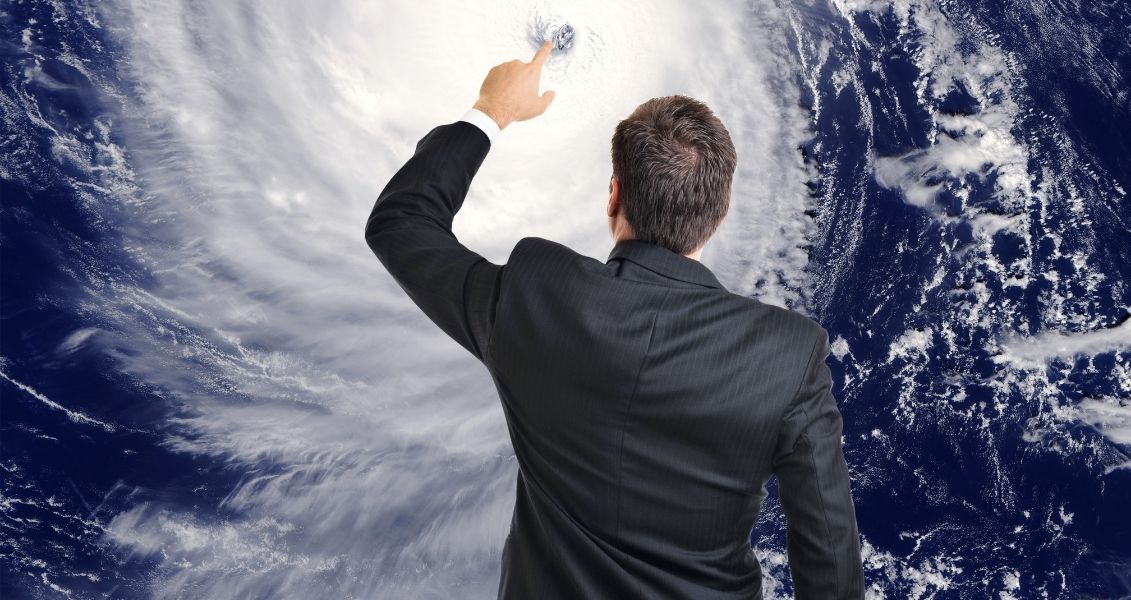World Meteorologist Day
What day is it?
The weather is of great importance to us – a change in plans, well-being and mood often depends on it. That is why weather forecasts have become so familiar to everyone. In addition, they anticipate natural disasters such as hurricanes or tsunamis, thereby saving lives and minimizing economic losses. All this is possible thanks to the hard work of people in an interesting profession — meteorologists. Meteorology is a complex science that studies the Earth’s atmosphere, its properties and physical processes. On the basis of meteorological studies, future weather conditions are simulated by specialists. The planet celebrates March 23 every year World Meteorologist Day — on the day of creation in 1950 of the World Meteorological Organization, which is a specialized agency of the UN.
How did the idea of celebrating World Meteorologist Day come about?
In ancient times, atmospheric phenomena were usually associated with the anger or favor of the gods, but people still tried to predict them, because crops, and therefore life, depended on it. Every ancient civilization has left behind evidence of an interest in meteorological forecasts. The oldest texts describing the formation of clouds were found by archaeologists in the Indus Valley. These texts date back to about 3000 BC.
The ancient Egyptians divided the year into three seasons. Each season corresponded to a certain meteorological event, one of which was the flooding of the Nile River. A small spill meant a year of famine due to drought, and too wide a flood damage. The Egyptians had omens that indicated the extent of the flooding of the Nile in a given year, although they did not understand the meteorological processes that lead to this.
The ancient Greek philosopher Aristotle is the author of the term itself “meteorology”, as well as the treatise “Meteorology” — the first reliable description and analysis of weather phenomena. In Ancient Rome, the geographer Pomponius Mela compiled the treatise “Descriptive Geography” on the basis of studies of climatic zones and related weather systems.
In medieval Europe, meteorology was limited only to observations and descriptions. In contrast, in the Middle East, the 9th-century naturalist Abu Hanifa al-Dinawari made detailed studies of the cycles of the moon, wind, storms, floods, snow, and other natural phenomena in terms of their effects on the growth of agricultural crops.
Around 1600, Galileo Galilei constructed a thermoscope that showed changes in temperature. The design of the device was quite primitive: it did not have a scale, and there were no units of measurement either. Despite this, the thermoscope became the prototype of modern thermometers.
Development of meteorology
The birth of modern meteorology took place during the Age of Enlightenment, along with numerous discoveries in the natural sciences. Astronomer Johann Kepler studied the structure of snowflakes – this was the beginning of crystallography. In 1643, Galileo’s student Torricelli made the first barometer. Astronomer Edmund Halley developed a theory of regional wind systems based on the study of trade winds and monsoons. In 1724, Gabriel Fahrenheit presented his temperature scale, and in 1742, the Anders Celsius scale appeared. Based on the temperature scale, a system for determining wind speed soon appeared – the Beaufort scale.
In 1817, the German naturalist geographer Alexander von Humboldt published the first temperature map, and his research laid the foundation for a new science – climatology. Meteorological services have begun to be created in many countries. Meteorologists of different countries had a need to exchange information about the weather, but for this an international organization was necessary.
In 1853, on the initiative of the USA, the first international conference of meteorologists was held in Brussels, during which representatives of ten countries agreed on keeping meteorological journals according to one common model. In 1872, a larger delegation of meteorologists from 52 countries gathered in Leipzig. A specialist from the Netherlands, Buis Ballot, suggested creating a worldwide network of meteorological observations, which would allow free exchange of data between countries, as well as conclude an international agreement on the standardization of observation methods and units.
The majority of delegates supported this idea, and in 1873 the first International Meteorological Congress was organized at a meeting in Vienna. Congress elected the Standing Meteorological Committee, a group of seven eminent meteorologists who are the heads of meteorological services in their countries. The committee was tasked with developing the rules and charter of the international organization. After the completion of this work in 1879, the International Meteorological Organization was officially announced at the Rome International Meteorological Congress. After World War II, it was reorganized into the World Meteorological Organization.
20th century
The development of meteorology continued in the 20th century. The advent of radio made it possible to broadcast the weather forecast to the public, and with the development of telemetry, information from weather stations to mass media began to be transmitted instantly. Mathematical theories and military technologies such as radars and satellites began to be applied in meteorology.
Modern meteorologists, with the help of digital technologies and geo-information systems, are able not only to forecast the weather, but also to predict changes in entire weather systems. In the time of large-scale climate change in which we live, this is especially important.
World meteorologist day in history
-
1853The first international conference of meteorologists was held in Brussels.
-
1879The International Meteorological Organization was created.
-
1947
October 11Signed the World Meteorological Convention. -
1950
March 23Day of entry into force of the World Meteorological Convention and day of formation of the World Meteorological Organization. -
1951
March 17The World Meteorological Organization acquired the status of a specialized agency of the United Nations. -
1961At the request of the World Meteorological Organization, the United Nations established the annual World Meteorologist’s Day.
-
1963The World Weather Service was created.
Frequent Questions and answers on World Meteorologist’s Day
In 1861, the weather forecast for the next day was first published in the newspaper “Times” in Great Britain. Its author was Vice-Admiral Robert Fitzroy, head of the Meteorological Department.
Celsius on his scale set the temperature at which water freezes as 0°, and took the boiling point of water as 100°. Fahrenheit took the temperature of a mixture of water, ice, and ammonium chloride as the zero mark. A temperature of 0° Celsius is correspondingly equal to 32° Fahrenheit.
The highest temperature was recorded in California on July 10, 1913 — 56.7°С, and the lowest — in Antarctica — -89.2°С, on July 21, 1983.
The names of these natural phenomena are given by the World Meteorological Organization, each year starting with the first letter of the Latin alphabet. Human names of natural phenomena are remembered much easier than numbers, and contribute more to the attention and caution of the population.
This organization includes the meteorological services of 187 states and 6 territories. By member territories are meant any areas or regions that have their own meteorological service, but are not responsible for international relations or are under the administration of the United Nations.
How to celebrate World Meteorologist Day?
March 23 is everyone’s professional holiday meteorologists, so on this day they hold conferences to share experience and discuss possible problems in their field. Part of the activities is aimed at attracting the attention of the public and mass media in order to increase the importance of meteorology. For the Hydrometeorological Service of Ukraine, this is also an opportunity to draw the attention of the state to the need to develop the scientific and technical base of the national meteorological sphere.
This day is usually timed to reward the best employees of meteorological services at all levels — from local to the World Meteorological Organization. The award of this organization has traditionally been awarded since 1956 to specialists for outstanding contributions to meteorology. Also, on the website of the World Meteorological Organization, a photo contest is held annually, in which everyone can participate, and the best photos of nature and weather phenomena are included in the organization’s photo calendar.
To mark World Meteorologist Day, you should definitely pay attention to the weather forecast, as well as congratulate your friends who work at meteorological stations. You can watch feature films based on meteorological events, for example, “Tornado”, “The Day After Tomorrow” or “The Impossible”.
Why is this day important?
Weather information is important for many reasons. In agriculture, knowing what the season will be like allows you to prepare correctly and grow a crop with the least losses. Thanks to the weather forecast, airplane pilots and ship captains can be sure of the safety of their route, it is also important for drivers to know about future fog, snow or ice.
Forecasts are vital for residents of coastal regions who are warned of approaching hurricanes or tsunamis; and the population of arid areas learns about the threat of forest fires in time.
The work of meteorologists helps us plan trips, walks, gardening and sports every day. This information is especially important for “weather-dependent” people, in whom weather changes affect well-being and work capacity.
by topic World Meteorologist’s Day in 2021 was “Ocean, our climate and weather”. She emphasized the importance of scientific research on the relationship between the ocean and the atmosphere. After all, in addition to forecasting the weather, meteorology deals with the study of climatic changes, such as fluctuations in the ocean level or the amount of greenhouse gases in the atmosphere. The importance of these studies is difficult to overestimate, because thanks to them, humanity understands the scale of the global climate crisis and the need for action to overcome it.
When will we celebrate? World meteorologist day?
| Year | Date | Weekday |
|---|---|---|
| 2021 | March 23 | Tuesday |
| 2022 | March 23 | Wednesday |
| 2023 | March 23 | Thursday |
| 2024 | March 23 | Saturday |
| 2025 | March 23 | Sunday |


































